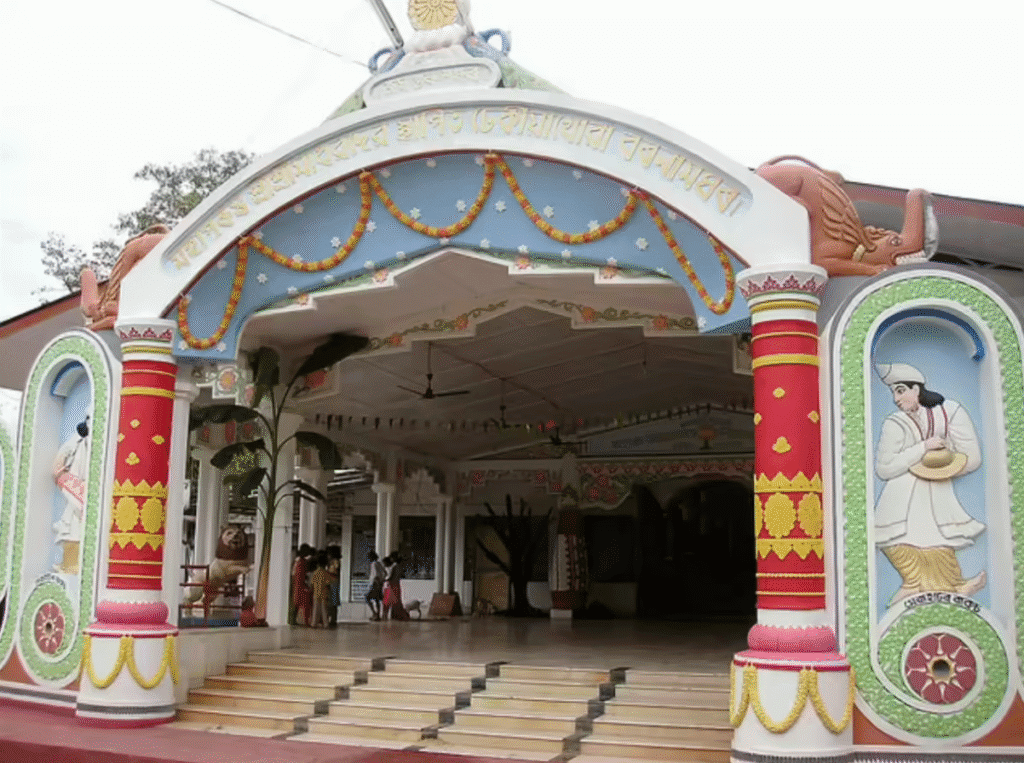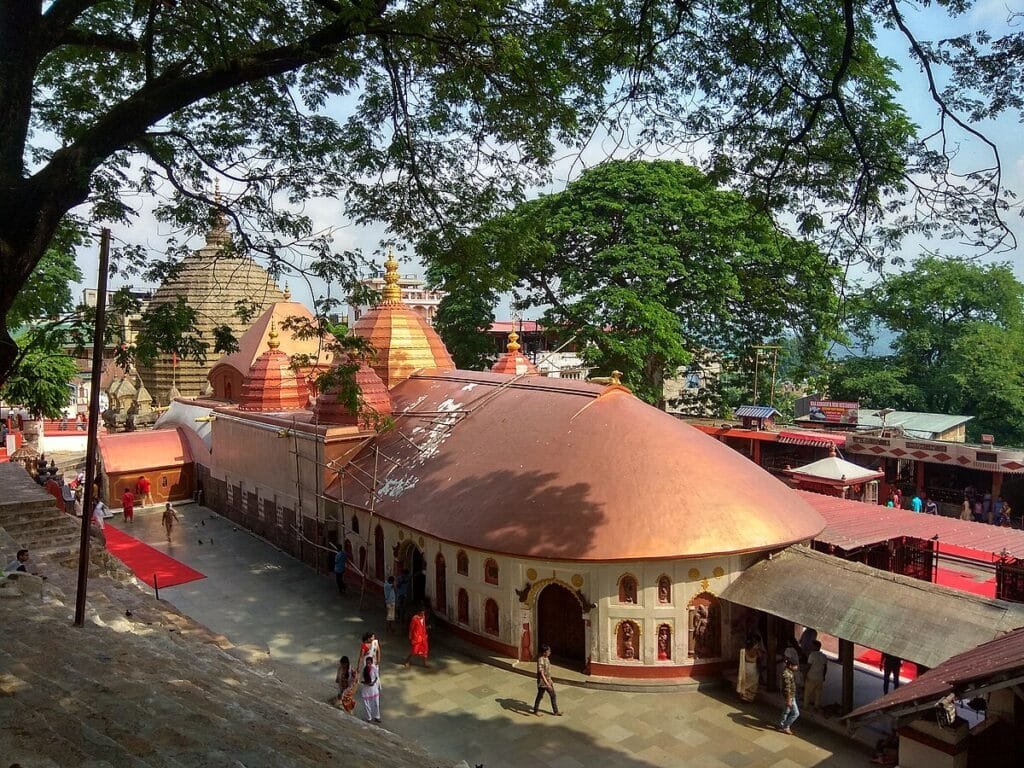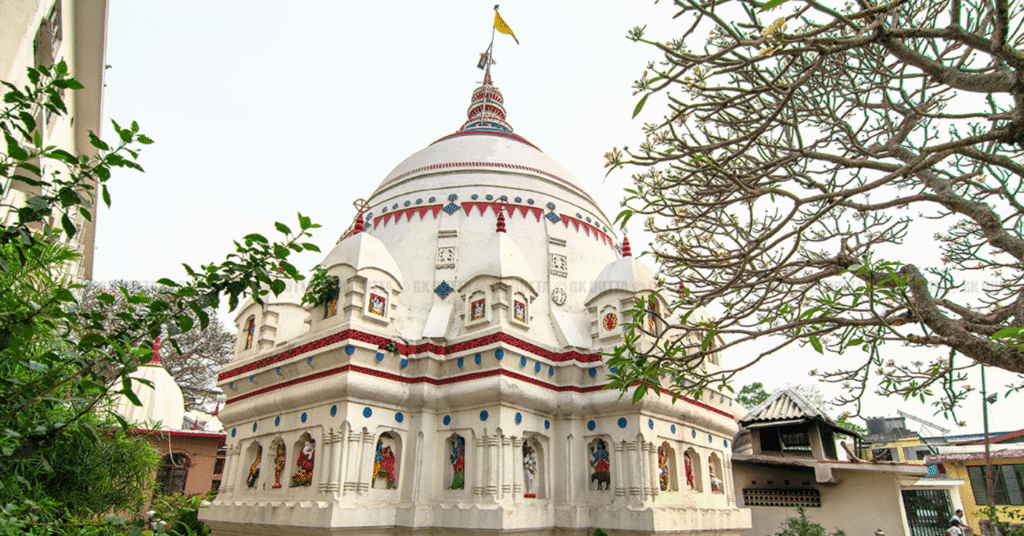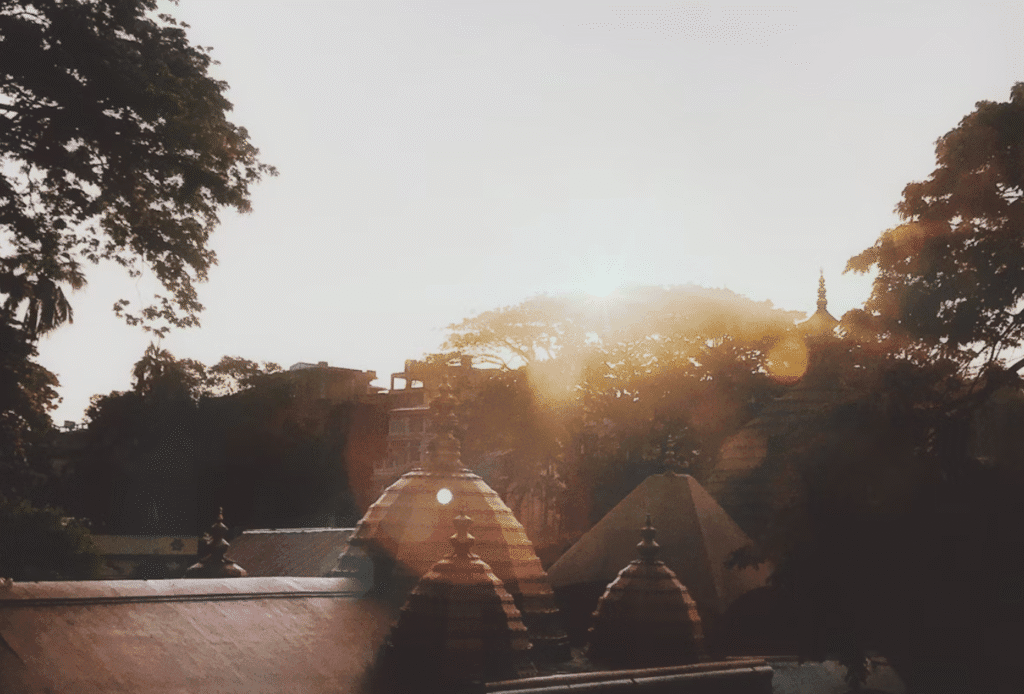Assam is a place that has peace, colour and faith. The sound of the bells of the temples is blended with the gentle running of the Brahmaputra. Each shrine in this place has a tale, chiseled on stone and mumbled in prayer. It feels intimate as you come to Kamakhya and Umananda with their tranquil heights, serene location and sacred energy. It is difficult not to feel overwhelmed by the love and the beauty that engulf you as a traveller.
It is not just about religion but about relationship, culture and eternity when visiting these temples in Assam. To whoever has a love for history as well as of heart, the temples in Assam offer long-lasting reminiscences even when the journey is over.
Related 10 Iconic Assam Tourist Attractions You Shouldn’t Miss on Your Trip
1. Keedereswara Temple of Hajo

The most sacred and historic temple of Assam is the Keedereswara Temple of Hajo. It is situated within a scenic setting on a hill of Madanchala, which is roughly 32 km north of Guwahati and stands in a graceful setting overlooking the landscape. The temple was constructed in 1753 by the Ahom king Rajeswar Singha, and it is dedicated to Lord Shiva.
The unusual feature is the rare Syambhu Linga that is said to be self-manifested and a personification of Ardhanarishwara – a form of Shiva and Parvati. This is a special talisman of Godly proportion, and it is preserved in a metal bowl. When a traveller visits the Kedareswara Temple, it provides a glimpse of the profound religious foundation and architectural beauty of Assam, so that it is regarded as one of the most spectacular temples in Assam.
2. Umananda Temple
Umananda Temple is on Peacock Island, which is at the heart of the Brahmaputra River at Guwahati. It was constructed in 1694 by Ahom king Gadadhar Singha, and it is dedicated to Lord Shiva, whom we here call Lord Umananda. The name and legends of the temple make it very spiritual in nature. Shiva is said to have once sat here until Kamadeva came to interrupt him, and was burnt to ashes, giving the island the name Bhasmachala.
A combination of faith and beauty, the rock carvings and scenic setting of the temple are amazing. The big festival is called Shivaratri and it attracts thousands of followers annually. Guwahati ferries can take the visitor to this queenly island, which is one of the most fascinating temples in Assam to visit.
3. Siva Dol Temple, Sivasagar
Siva dol is another magnificent edifice situated next to Borpukhuri tank in Sivasagar. This grand temple was constructed in 1734 and it is devoted to Lord Shiva and is enclosed by two other temples, Vishnu Dol and Devi Dol. The governing temple is ten feet tall, and the bottom is 195 feet long with a golden top.
Mahashivaratri is a festival when the complex becomes full of chanting, lamps, and pilgrims (thousands of them). There is an aura of sacrifice and traditions in the air. Another religious attraction is the Sawan month, where there are all-night kirtans and prayers. Simultaneously, there is Visnu Dol, Rath Y Kar, and Devi Dol, which is bright with Durga Puja, the spiritual core of Sivasagar.
Explore: 11 Yummy Asian Food Recipes That Are Quick, Easy & Full of Flavor
4. Dhekiakhowa Bornaamghar

Of all the numerous sacred temples in Assam, Dhekiakhowa Bornaamghar in Jorhat has a special place of worship. Being one of the most sacred prayer halls of the state, this was founded by a saint, Madhavdeva, a disciple of Srimanta Sankardeva, in the 16th century. The eternal earthen lamp in the temple which the saint has lit up himself, has been burning as long as time immemorial. It is named after a simple lunch of dhekia saak and rice, which was given to the saint by a benevolent old woman.
Devotees meet every year in August and September to celebrate the death anniversaries of Madhavdeva and Sankardeva. Harmonic and holistic, Dhekiakhowa Bornaamghar attempts to capture the spiritual core and the simple emotions of Assam.
5. Navagraha Temple
Navagraha Temple is located atop Chitrachal hill in Guwahati, and it is one of the most interesting temples in Assam. Constructed in 1752 by Ahom king Rajeswar Singha, it is devoted to the nine Hindu deities the Navagrahas. These are Surya, Chandra, Mangala, Budha, Brihaspati, Shukra, Shani, Rahu and Ketu. The temple had previously been damaged by an earthquake although later it was repaired. Its inner sanctity the garbhagriha remained unharmed.
The locals also go there to get astrological balance and the peace of the planet. The rustic appearance is created by the iron-sheet dome. As one looks all around and perceives the city beneath, there is a certain silent relationship between the earth and the cosmos.
6. Mahamaya Temple

One of the oldest temples in Assam, Mahamaya Temple, also called Mahamaya Dham is one of the holy Shakti Peethas in Bogribari located near Kokrajhar. In honour of Goddess Mahamaya, this shrine is centuries old and is visited all year by worshippers. The ritual animal sacrifice of Durga Puja, which is 400 years old, continues to date, depicting strong faith and devotion. On the grounds, there are idols of Lord Hanuman and goddess Kali that give it a spiritual impression.
Close to it there is the Mahamaya Snaanghat, which marks the location where the goddess is thought to have bathed. Priests conduct the holy Shakti Yagya at the beginning of every January. The temple is enclosed in nature and tradition and this reflects the eternal soul of the Assamese divine heritage.
7. Asvakranta Temple
One of the most serene temples in Assam is the Asvakranta Temple, which is situated on a rocky bank of the Brahmaputra. It is devoted to Lord Vishnu in his reclined position, or Anantasayin Vishnu, the god of rest and harmony. The name of the temple, translated as “ascended by horses”, is associated with a myth, according to which a legendary Lord Krishna halted his army here, before overpowering the demon Narakasura. Pilgrims consider travelling to this temple due to the ability to cleanse sins and get salvation. It is a poignant experience for those who want to enjoy a spiritual tranquilly amidst the scent of flowers and the tranquil flow of the river.
8. Da Parbatia Temple
This is a classical archaeological treasure because Da Parbatia Temple in Tezpur is among the oldest temples in Assam. It is thought to be one of the oldest Hindu shrines in the area; it was constructed during the 6 th century. In 1924, its well-carved stone doorway was discovered by archaeologists an outstanding example of the Gupta architecture.
The carvings are elaborate and represent the floral patterns, godly or goddess patterns, and mythical images of the antiqueness of the Assamese. Even though all that has survived today are ruins, the place oozes with a profound spiritual as well as historical appeal. Da Parbatia Temple is a permanent monument to the heritage and the craft of Assam, and was safeguarded by the Ancient Monuments and Archaeological Sites and Remains Act of 1958.
9. Sukreswar Temple

The Sukreswar Temple is a magnificent edifice situated on Itakhuli Hill at Panbazar and it commands the Brahmaputra River. It was constructed by Pramatta Singha, an Ahom ruler in the year 1744 and is devoted to Lord Shiva. The temple has a long staircase that goes directly to the riverbank where people carry out rituals and honour their ancestors. The perspective of this place is beyond words, particularly during sunset.
The Umananda Island is shimmering on the distance, the boats pass, and the river is golden to reflect the fading light. The serene environment and spiritual presence of the temple are what make it a silent escape out of the city chaos of Guwahati where someone can relax and sense the inner peace.
10. Kamakhya Temple
Kamakhya Temple is one of the extremely sacred temples in Assam and one of the oldest Shakti Peethas in India. It is located on Nilachal Hill in Guwahati, with the Brahmaputra River. The deity of the temple is Goddess Kamakhya, who is an incarnation of Shakti. It is also distinctive in the sense that there is no idol present there, but rather the goddess is venerated as a sacred yoni in the shape of a stone.
The origin of the temple dates back to the 8th-9th century, which was ultimately reconstructed by the Ahom kings. The Ambubachi Mela is the festival of the fertility of the goddess that is celebrated in June every year and draws thousands of pilgrims. Kamakhya Temple is quite mysterious and very divine with its red spires, tantric legends and spiritual energy.
Also read: 11 Assam Hidden Gems – From Haflong Hills to Majuli Island











